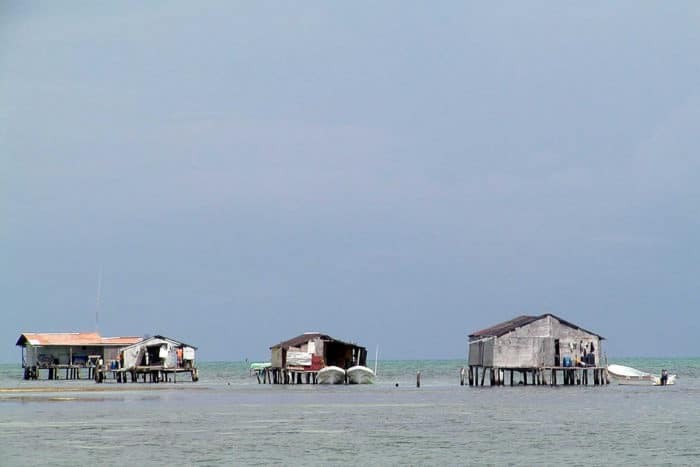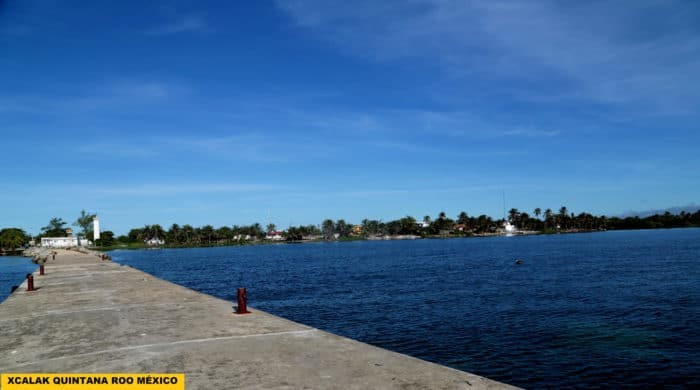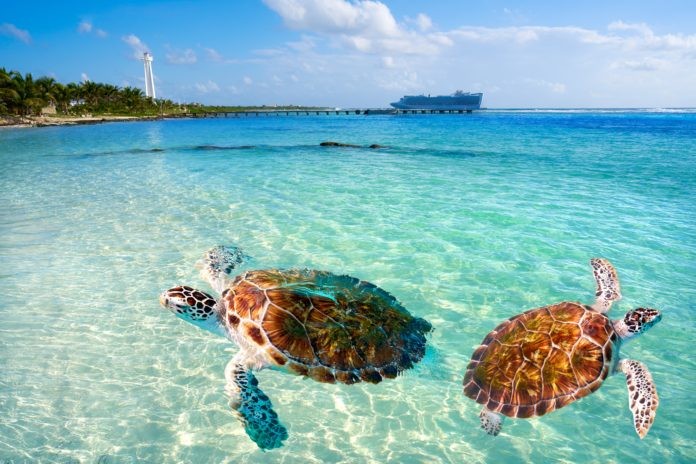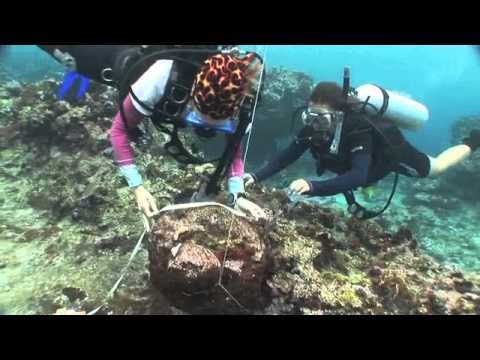The Mesoamerican Barrier Reef System has some of the best diving in the world and is a destination that may attract more divers than any other region. The reef system goes from the Bay Islands of Honduras through Guatemala and Belize and up to the tip of the Isla Contoy at the tip of the Yucatán Peninsula, a distance of over 1,000 kilometers. The Mesoamerican reef is a barrier system because it includes the Belize Barrier Reef which is the worlds second largest barrier reef and the largest double barrier reef.
We likely all have heard and many have experienced the outstanding diving in the Bay Islands of Honduras. Moving north, the diving in Belize is highly regarded. Diving Belize is along the barrier reef and in the lagoon behind it. We also know of the three atolls found in Belize. The north portion of the Mesoamerican reef brings us to the very popular dive sites around Cozumel and Cancun. But what do you know about the diving between Belize and the Cozumel and Cancun dive sites?
Welcome to the secret that is or was Costa Maya. Costa Maya is best known as the cruise port that many cruise ships use when having Belize or the Bay Islands as destinations. Costa Maya is also much of the coast line of Othón P. Blanco, one of the municipios of the state of Quintana Roo. This area starts at the southern border of Sian Ka’an in Tulum and continues to Xcalak the southern most inhabited coastal village in Mexico. This is a distance of approximately 100 kilometers (62 miles) or about 10 percent of the Mesoamerican Barrier Reef System. If you continue south from Xcalak another 10 kilometers (6 miles) you will be at the border of Belize and at Ambergris Caye. We all know how great the diving is there.
If you are familiar with diving in Belize, you may know that there are three atolls found outside the barrier reef. There are four atolls in the Caribbean, the fourth is Banco Chinchorro, just thirty minutes off the coast of Costa Maya. Most of the diving in Costa Maya is from dive centers in Mahahual and Xcalak. Dive centers in Mahahual also support divers from the cruise ships.

Banco Chinchorro
Banco Chinchorro is an atoll about 35 kilometers (22 mi) offshore. In 2004, the atoll and the area around it were declared a protected area. The official title is Reserva de la Biosfera Banco Chinchorro. It is both a UNESCO’s Man and the Biosphere Programme (MAB) site and a wetland under the Convention on Wetlands (Ramsar, 1971).
Scientist seems to have some difficulties classifying reefs, some accept a three class system and others a four class system. A few even say there are five classes. Because of this, you may seem it called an atoll or a false atoll/ platform reef. Whether you call it an atoll or a platform reef it is still the largest of its type in the northern hemisphere and in the Atlantic. North to south, Banco Chinchorro is approximately 40.2 kilometers (25.0 miles) long and approximately 16 kilometers (9.9 miles) wide at its widest point. It covers an area of 800 square kilometers (310 square miles).
The atoll has three islands, with a total land mass of 6.7 square kilometers (2.6 sq mi). It has four types of habitats: coral reefs, seagrass beds, sandy areas, and mangroves. The land portion represents less than one half of one percent of the entire area, still, it is still home for many species of local and migratory birds as well as reptiles. Four species of turtles also use these small islands to nest. The water inside the lagoon is less than 6 meters, with most of the seagrass beds being in one meter or less of water. The density of the seagrass and the shallow water makes it difficult to distinguish between land and water from aerial or satellite photographs.
If diving with sharks has become a been-there-done- that activity them maybe Banco Chinchorro has a dive to add some excitement. A species of American crocodile also lives in the lagoon and some dive centers have special trips to dive or snorkel with them.
Outside of the atoll’s lagoon, you will find diving in waters 10 to 30 meters deep. There are about a dozen dive sites on the western side of the atoll and about twice that many shipwrecks on the eastern side. Due to concerns about looting, many of the shipwrecks are closed for scuba diving. However, some are open for free diving and snorkeling.
The biosphere is home to 95 different species of coral and has had over 1,300 species of marine life recorded and extends out to 60 meters depth. Around the atoll is water a thousand meters deep.
You can dive here from dive centers in both Mahahual and Xcalak.
Mahahual
Tourism has become very important to this region of Mexico and the small town of Mahahual is one of the principal destinations. The small fishing village has grown to add a line of hotels, resorts, and restaurants along the coast. The beaches are wonderful and good roads connect it to Cancun and its airport some 219 miles (352 kilometers) away. The industry is still small and there are no high rise hotels nor condo units.
It does have a nearby cruise port. The Costa Maya cruise port is just past the edge of the town. Up to 4,000 passengers and crew descend on the port a few times a week. While many never venture past the port, many more get no farther than “New Mahahual” an area of shops just outside of the port’s gates.
Mahahual is the center of most of the scuba diving in the area. The reefs are close to shore with 15 dive sites just offshore. Some of them can be done as a shore dive, however, most of the dive centers will still dive them from boats. Visibility often is more than 30 meters/ 100 feet and the water is mostly calm. In the winter larger marine animals will come into the lagoon side of the reefs.

Xcalak
Traveling 60 kilometers (37 mi) south of Mahahual you come to the end of the road and the small village of Xcalak. You immediately wonder if you are in the right place. It is a small place, less than 400 inhabitants, no cell service, no grocery store or gas station. There are a few resorts and small hotels, very small in both cases. A “large” hotel might have ten rooms. However, you are in the right place and just offshore is the Xcalak National Reef Park (Parque Nacional Arrecifes de Xcalak).
Located just a few miles north of the Belize border, Xcalak is a haven for those who want a simple life and want to enjoy a pristine environment. It said that when the locals saw the cruise port being developed in Mahahual, they wanted no part of that type of development. So they lobbied the government to declare the waters a national park and restrict development.
The Xcalak National Reef Park provides a destination that is great for scuba diving, snorkeling, kayaking, and fly-fishing. The dive sites are many and the divers very few. The Barrier reef is close to shore so it is a short trip to deeper sites if that what you want. Visibility and conditions are generally great.
Xcalak is also closed to the southern portion of Banco Chinchorro, so a 30-minute boat ride will allow you to experience that destination as well.
Shhh, Let’s keep it our secret.
If you are a diver that likes your dive trips to be exciting underwater but relaxed on the surface, then Costa Maya might be the perfect destination for you.


